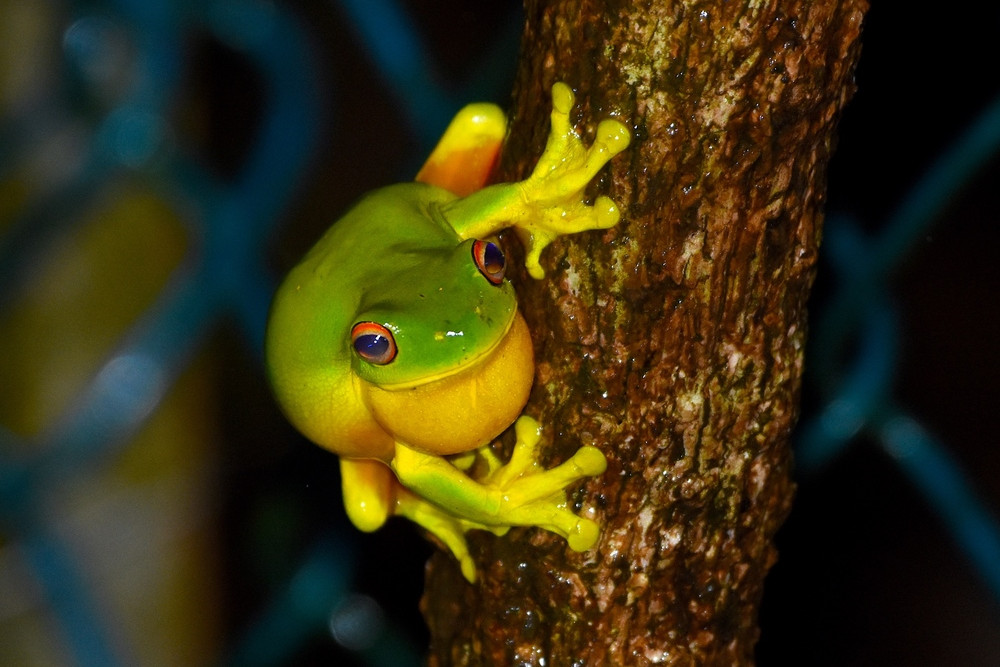Community & Business
3 April, 2022
Wonders of Wildlife with Peter Valentine
Wonderful weather for... frogs

THROUGHOUT our region, the first onset of the monsoon rains brings out many species of frogs and large aggregations can produce an astonishing cacophony, letting us know the wet has arrived.
This annual event is colourful and productive as every waterbody is soon filled with not just water, but often teeming with adult frogs busy in the processes of reproduction. Males will call in many different ways – each species is usually distinct – trying to attract a mate.
Females can use the calls to assess the fitness of potential mates before choosing. Later on, as the wet season progresses, there will be more of these frog symphonies, but never quite as spectacular as opening night.
Our region is particularly blessed with frog diversity, most not found anywhere else. They represent a great diversity of lifestyles, some remaining poorly known. Many are capable climbers, often called tree frogs, and spend much of their lives in the branches, canopies and hollows of rainforests and other communities.
Others are adapted to living underground for the dry parts of the years, burrowing below ground to conserve moisture while they await the next wet season. In the rainforests are many species taking advantage of the leaf litter layer, seeking protection from predators and raising their young within that moist environment.
Almost all our frogs are nocturnal and for many it takes quite an effort to find them – heading out with headlamps and sharp ears. But some have so adapted to human disturbance that they are comfortable sharing our houses.
There are more than 40 species of frogs in our region and while most are secure, some are threatened with extinction. Many of our frogs have been adversely affected by an introduced fungus (chytrid) and that has contributed to population collapse and extinction in some Queensland species.
Threats are increasing with climate change and further problems are associated with poorly planned development. A current issue is the potential destruction of critical habitat for the Magnificent Brood Frog by the proposed Chalumbin Wind Turbine construction.
This amazing frog is a species of few known locations (most on the Tablelands) where the males make small nests to hold eggs laid by females, which they then guard until more rain flushes the emerging tadpoles into adjacent soaks. There is not a single photograph yet taken of a female!
Despite widespread community support for alternative energy, such developments cannot be seen as green if they destroy critical habitat for endangered species, and of course there are plenty of suitable places for wind towers away from such significant habitat.
Most north Queenslanders are very familiar with the very widespread and abundant Green Tree Frog, resting by day behind paintings, in toilets, in various crevices in and around our houses, only to come out at night and hunt around our lights. They in turn might become a target of others, birds and snakes in particular.
One of the more appealing tree frogs is the Orange-thighed Frog, confined to our region and with a great call. When the rain is really coming down the males gather low down (descending from their canopy hideaways) and compete with their incessant calls.
Females are fussy but eventually they might accept a male and adjoin to a nearby waterbody where eggs are deposited on underwater plants. Next time it rains, take a walk outside and see how many species of frogs you can hear or see. You might be surprised.
Peter Valentine is an adjunct Professor at James Cook University and he has spent much of the past 40 years studying wildlife in northern Queensland.



